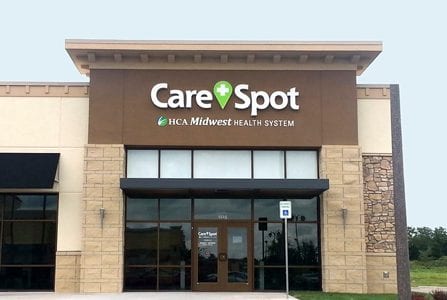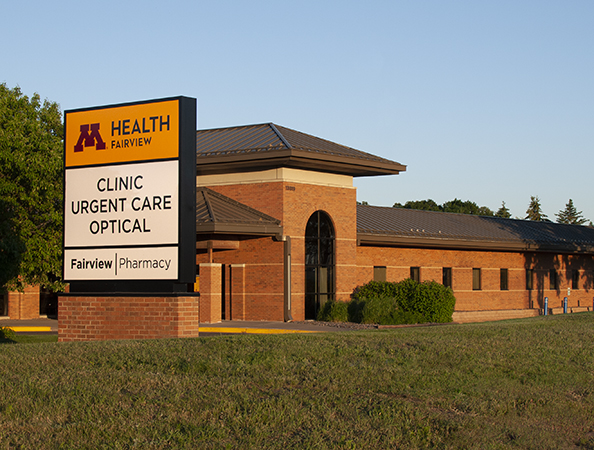Necessary Services Supplied by Clinics Specializing in Urgent Care
Necessary Services Supplied by Clinics Specializing in Urgent Care
Blog Article
Understanding the Function of Urgent Care in Providing Timely Treatment for Non-Life-Threatening Conditions
Immediate care facilities have actually emerged as a crucial part of the health care landscape, resolving the instant demands of individuals with non-life-threatening conditions. Comprehending the nuances of immediate treatment could significantly impact patient outcomes and the general efficiency of health care shipment.
What Is Urgent Care?
Urgent treatment refers to a category of medical solutions created to address non-life-threatening problems that require prompt attention. These centers function as an intermediary in between medical care medical professionals and emergency clinic, providing a hassle-free option for people that need timely treatment without the substantial waiting times usually related to emergency departments.
Immediate care facilities are normally staffed by physician, including physicians, nurse practitioners, and doctor assistants, who are educated to identify and deal with a broad variety of conditions. Common solutions provided by these centers include treatment for minor injuries, diseases, and infections, along with analysis tests such as X-rays and lab work.
The accessibility of urgent care is a crucial consider its appeal, as numerous centers run beyond routine office hours, including weekends and nights. When their key care company might not be accessible, this extended availability enables individuals to receive prompt treatment. Additionally, immediate treatment centers commonly approve walk-in clients, removing the need for appointments. On the whole, urgent treatment plays a vital duty in the health care system, guaranteeing clients can access essential medical solutions immediately and efficiently.

When to look for treatment at an immediate care facility instead of a main treatment medical professional or an emergency situation room,Many people may locate themselves unsure regarding. Immediate treatment is designed to attend to non-life-threatening conditions that require timely interest yet are not extreme enough to call for an emergency clinic check out.
Typically, one need to consider urgent take care of concerns such as minor cracks, sprains, cuts calling for stitches, or infections like urinary tract infections. Additionally, cool or flu signs and symptoms, rashes, and allergic reactions can also be properly managed in this setup.
It is very important to keep in mind that urgent treatment is not suitable for lethal emergencies, such as chest discomfort, problem breathing, or serious blood loss, which demand instant emergency clinic intervention.
People who lack access to a medical care physician or can not protect a timely consultation might likewise take advantage of urgent treatment solutions. Inevitably, comprehending when to utilize urgent treatment can cause more efficient health care distribution, permitting people to obtain the appropriate degree of treatment based on their details wellness demands.
Advantages of Urgent Treatment Centers
Selecting urgent care centers for non-life-threatening problems uses numerous benefits that improve client experience and access. One primary advantage is the decreased delay times compared to conventional emergency clinic. Immediate treatment centers typically run on a first-come, first-served basis, allowing individuals to get prompt clinical attention without the long delays commonly linked with health center setups.
In addition, immediate care centers offer extensive hours, including evenings and weekends, suiting individuals with varying routines. This adaptability makes sure that individuals can look for care when it is most hassle-free for them, better advertising prompt treatment.

Moreover, these centers commonly provide an extensive series of solutions, consisting of small procedures and analysis tests, all under one roof covering. This loan consolidation of solutions not only streamlines the patient experience but likewise fosters an extra natural strategy to taking care of non-life-threatening wellness concerns, eventually profiting general person results.
Typical Problems Dealt With
At immediate treatment centers, a selection of non-life-threatening conditions can be effectively treated, providing individuals with timely and easily accessible medical aid. These facilities are especially experienced at resolving issues that call for punctual attention however do not pose see post an instant threat to life or limb.
Usual problems treated at urgent treatment centers consist of minor injuries such as sprains, stress, and cracks. Immediate care centers are outfitted to perform necessary analysis examinations, such as X-rays and research laboratory tests, enabling them to offer thorough treatment.
Additionally, urgent care companies can administer vaccinations, helping to stop the spread of infectious conditions - Urgent Care. They also use services for small treatments, such as suturing injuries or draining abscesses. By providing these varied services, immediate care centers play an essential role in bridging the gap between health care and emergency situation services, making certain individuals get prompt therapy for a variety of problems without the demand for lengthy wait times normally associated with emergency rooms
Exactly How Urgent Care Supports Healthcare System
Urgent treatment centers play a crucial duty in supporting the overall healthcare system by minimizing the problem on emergency situation departments and giving timely access to healthcare for non-life-threatening problems. By handling situations such as minor injuries, infections, and illnesses, urgent treatment centers permit emergency divisions to concentrate on more critical people calling for immediate focus.
Additionally, urgent treatment facilities enhance medical care availability, providing extensive hours and a more practical alternative to conventional health care setups. This ease of access is especially useful for patients who may not have a normal physician or that require prompt visit this page therapy beyond regular office hours. Because of this, immediate treatment centers successfully reduce improve and wait times patient contentment.
In addition, immediate care centers contribute to cost financial savings for both clients and the medical care system by offering lower-cost services compared to emergency departments. This monetary efficiency is important in an era of rising medical care costs, permitting individuals to obtain required care without incurring expensive expenses.
Final Thought
Finally, immediate care facilities play an important function in the healthcare system by providing prompt treatment for non-life-threatening problems. By bridging the space in between health care and emergency areas, these facilities guarantee that patients receive prompt clinical focus without the extensive wait times normally connected with emergency situation departments. The accessibility and performance of urgent care facilities add considerably to reducing the general problem on health care resources, improving client outcomes, and advertising a more effective medical care shipment system.
Immediate treatment facilities have actually arised as an important component of the health care landscape, addressing the instant needs of patients with non-life-threatening problems. Immediate treatment visits typically sustain lower out-of-pocket expenditures compared to emergency situation division sees, making care much more affordable for people without compromising quality. Immediate care centers are equipped to perform required diagnostic examinations, such as X-rays and lab tests, enabling them to offer detailed treatment.
By supplying these diverse services, urgent treatment facilities play an important duty in linking the void in between main treatment and emergency services, ensuring individuals receive timely therapy for a broad array of problems without the need for lengthy delay times normally associated with emergency situation rooms.
Moreover, urgent care facilities boost medical care accessibility, providing extended hours and a more convenient alternative to conventional primary treatment settings.
Report this page